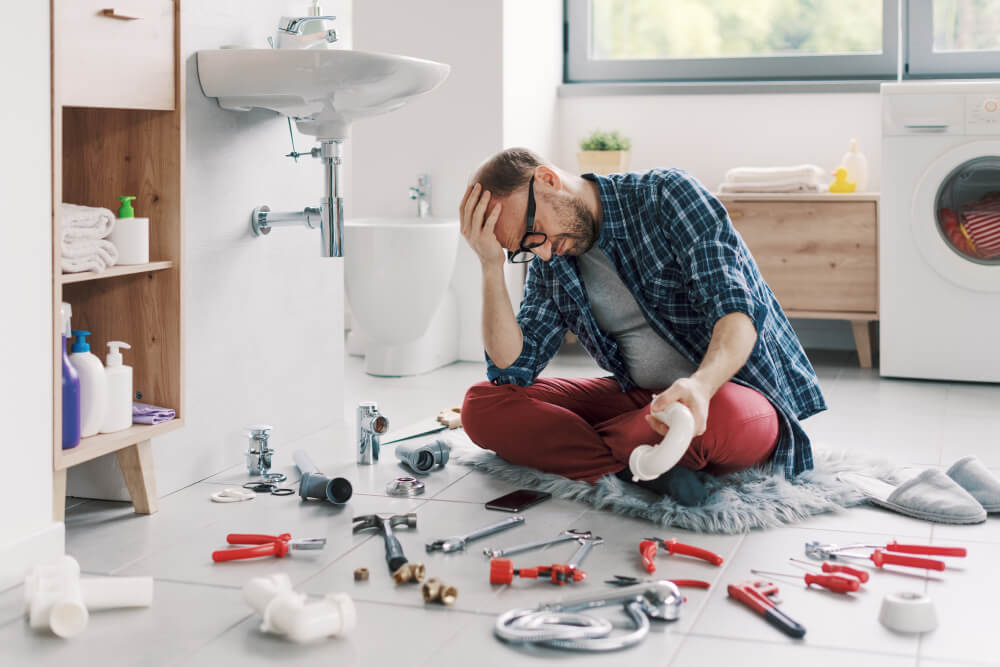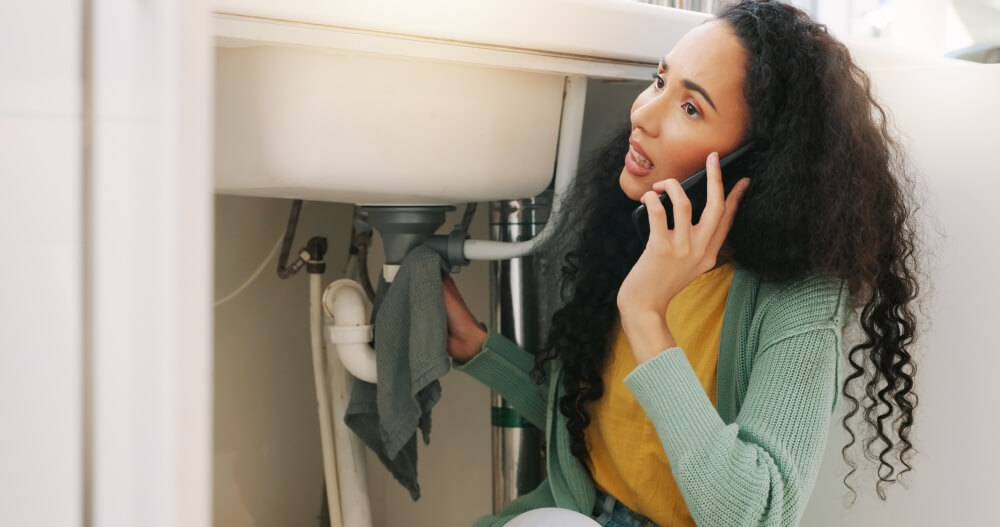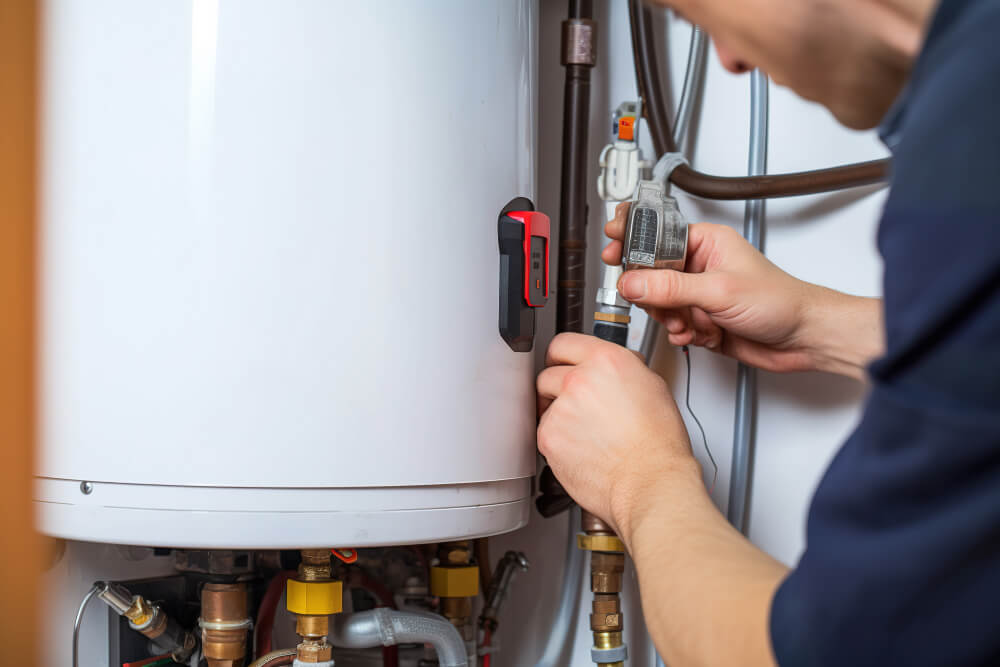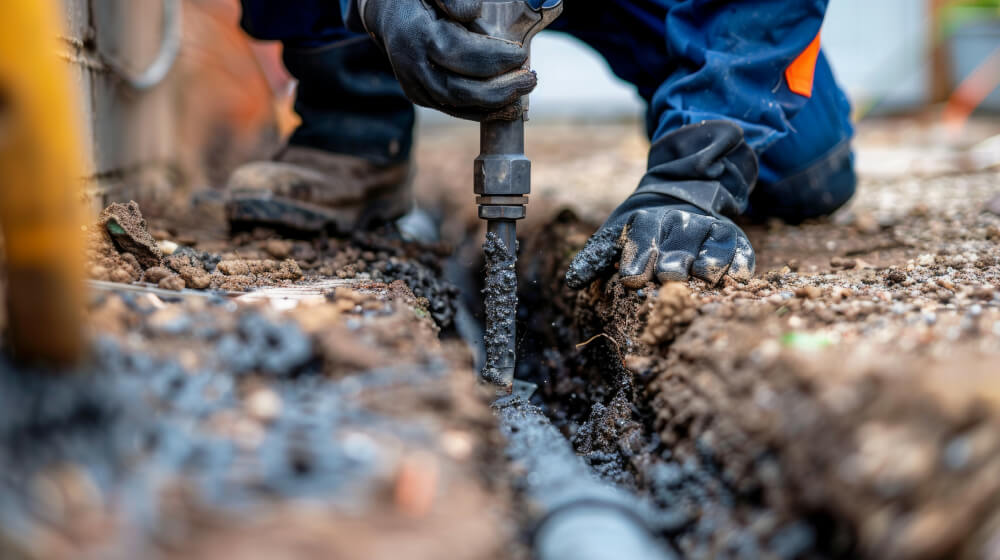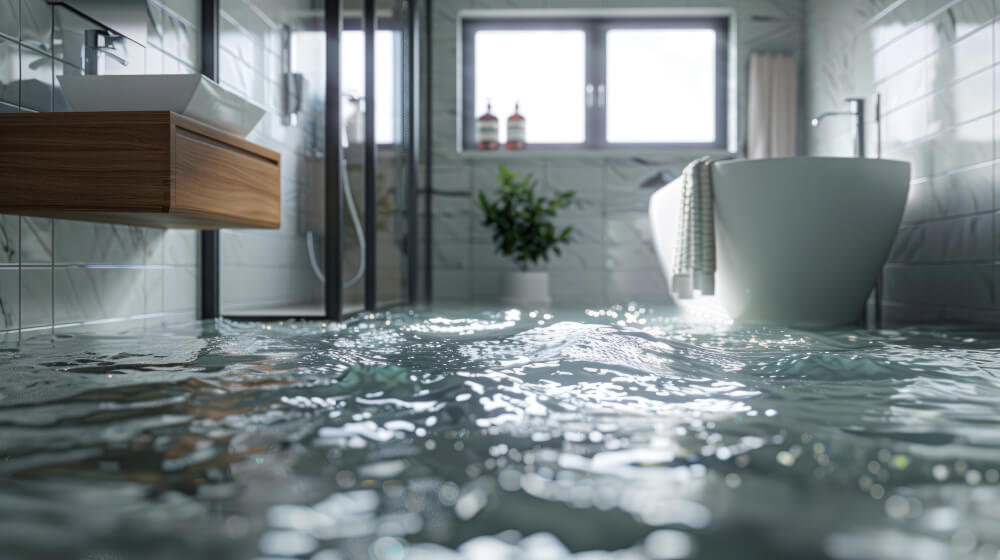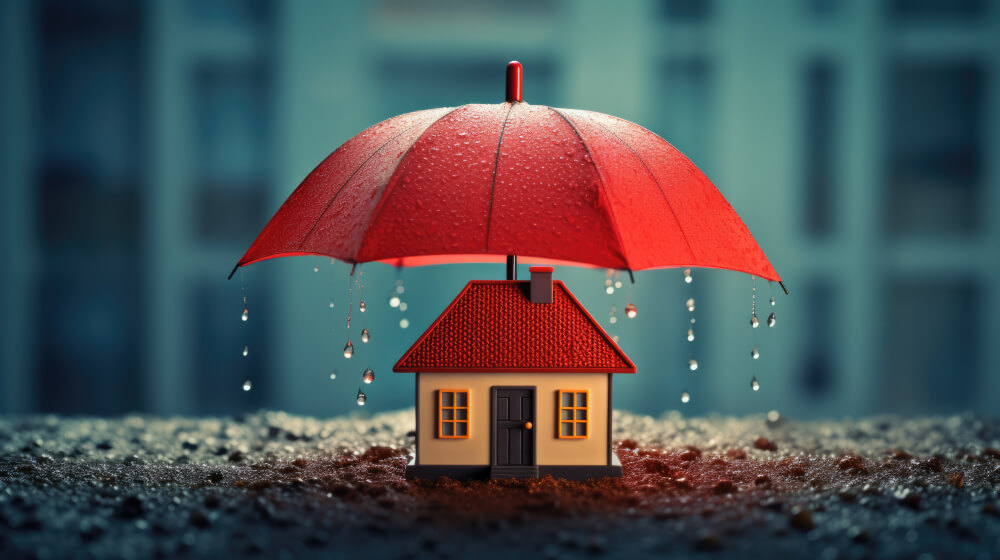Common Causes of Sewer Line Issues
Tree Roots- Description: Tree roots naturally seek out moisture, and sewer lines provide an attractive source. Roots can infiltrate small cracks or joints in the sewer line, eventually causing blockages or even breaking the pipes.
- Symptoms: Slow drainage, gurgling noises from drains, and sewage backups.
- Description: Over time, sewer pipes made of cast iron or clay can corrode, deteriorate, and collapse. Modern PVC pipes are more durable but can still suffer from wear and tear.
- Symptoms: Frequent clogs, slow drains, and leaks.
- Description: Grease, hair, soap, and other debris can accumulate in the sewer line, causing blockages. Items flushed down the toilet, such as wipes, sanitary products, and paper towels, can also lead to clogs.
- Symptoms: Slow drains, water backing up into sinks, toilets, or showers, and foul odors.
- Description: Natural ground movement and soil conditions can cause sewer lines to shift, crack, or break. This is more common in areas with expansive clay soils or regions prone to earthquakes.
- Symptoms: Sudden drainage issues, cracks in your foundation, and visible depressions in your yard.
- Description: Improper installation of sewer lines or lack of regular maintenance can lead to a range of issues, from misaligned pipes to insufficient slope for drainage.
- Symptoms: Recurring drainage problems, leaks, and frequent need for repairs.
Join HICP Homeowner’s Alliance
Connect with experts, get special discounts and enjoy member benefits
Preventive Measures
Preventing sewer line issues involves regular maintenance, mindful practices, and being aware of potential hazards. Here are some key preventive measures:
Regular Inspections- Why It’s Important: Early detection of potential issues can prevent major problems and costly repairs.
- How to Inspect: Hire a professional plumber to conduct regular inspections using a sewer camera to check for cracks, blockages, and root intrusion.
Why It’s Important: Prevents roots from infiltrating and damaging sewer lines.
How to Manage:- Planting Distance: Plant trees and shrubs away from sewer lines. Consult with a professional to determine safe distances.
- Root Barriers: Install root barriers to block roots from reaching the sewer line.
- Regular Root Cutting: If roots are already present, have them professionally cut and removed periodically.
Why It’s Important: Prevents blockages caused by inappropriate items entering the sewer system.
How to Practice:- Toilets: Only flush human waste and toilet paper. Avoid flushing wipes, feminine hygiene products, paper towels, and other non-degradable items.
- Sinks: Use drain strainers to catch food particles and debris. Avoid pouring grease, oil, or fat down the drain.
- Why It’s Important: Helps maintain clear drains and prevents buildup.
- How to Use: Regularly use enzyme-based cleaners that break down organic matter in pipes. These are safer for the plumbing system compared to harsh chemical cleaners.
- Why It’s Important: Prevents minor problems from escalating into major issues.
- How to Address: Fix slow drains, small leaks, and minor clogs as soon as they occur. Don’t ignore warning signs like gurgling noises or foul odors.
Solutions for Sewer Line Issues
If you’re already facing sewer line problems, here are some effective solutions:
Hydro Jetting- Description: A professional service that uses high-pressure water to clear blockages and clean the inside of sewer pipes.
- Best For: Removing grease buildup, debris, and small root intrusions.
- Process: A plumber inserts a hose with a specialized nozzle into the sewer line. High-pressure water (up to 4,000 PSI) blasts away blockages and cleans the pipe walls.
- Description: A trenchless repair method that involves inserting a flexible, resin-coated tube into the damaged pipe, which is then inflated and cured to form a new pipe within the old one.
- Best For: Repairing cracks, leaks, and minor damage without extensive excavation.
- Process: The plumber cleans the pipe, then inserts the liner. The liner is inflated and left to cure, creating a seamless, durable new pipe.
- Description: Another trenchless method where a bursting head breaks the old pipe while simultaneously pulling a new pipe into place.
- Best For: Replacing severely damaged or collapsed pipes.
- Process: The plumber digs two access points and uses a hydraulic machine to pull the bursting head and new pipe through the old pipe’s path, breaking the old pipe apart.
- Description: Involves digging up the affected section of the sewer line to replace or repair it.
- Best For: Severe damage that cannot be addressed by trenchless methods.
- Process: The plumber excavates the area, removes the damaged pipe, and installs a new section. This method is more disruptive and expensive but necessary for major repairs.
- Description: Chemicals that kill tree roots invading the sewer line.
- Best For: Short-term solution to root intrusion.
- Process: A plumber applies the root killer to the sewer line, which kills the roots without harming the tree. However, regular treatments may be necessary.
Dealing with Emergency Sewer Line Issues
Identifying EmergenciesSymptoms: Sudden and severe backups, multiple fixtures draining slowly, or water pooling in your yard.
Immediate Actions:- Stop Water Usage: Avoid using water until the issue is resolved.
- Contact a Professional: Call a licensed plumber for emergency services.
- Prevent Further Damage: Use a sewer cap or plug to block the sewer line temporarily.
- Contain Spills: Use sandbags or barriers to contain sewage spills and prevent them from spreading.
Dealing with sewer line issues requires a combination of preventive measures, regular maintenance, and prompt action when problems arise. By understanding the common causes of sewer line issues and implementing effective prevention strategies, you can protect your home from costly and disruptive plumbing emergencies. If you do encounter a sewer line problem, consider the solutions outlined above and don’t hesitate to call a professional plumber for assistance. Proper care and attention to your sewer line will ensure a healthy and functional plumbing system for years to come.

